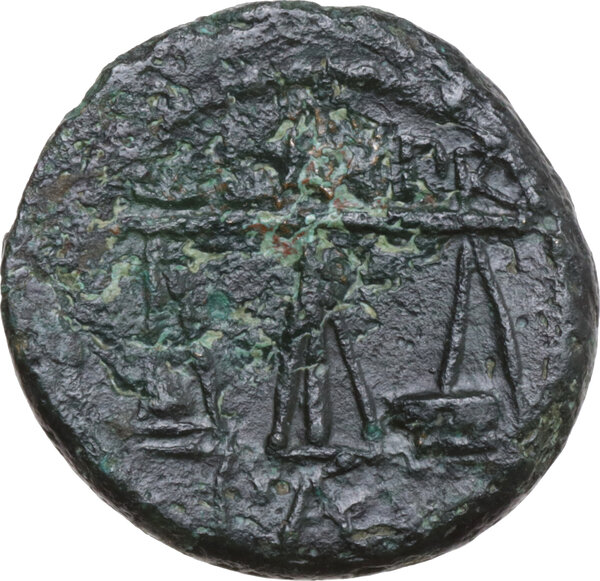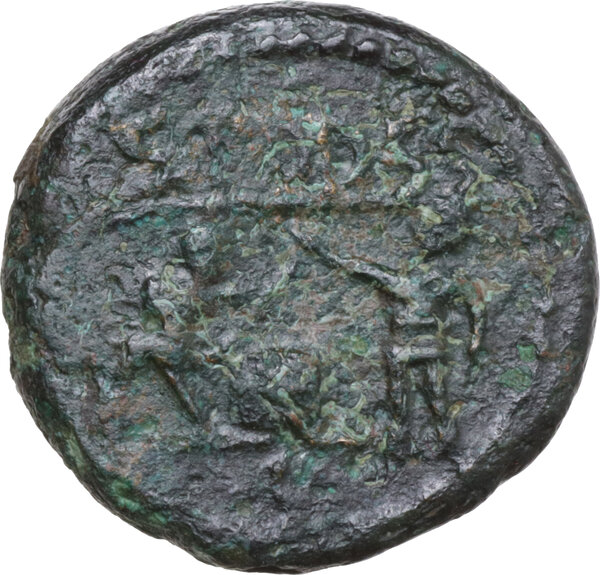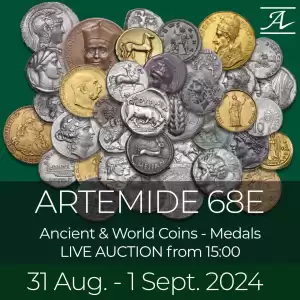A very rare representation of the minting process of antiquity


Greek Italy. Northern Lucania, Paestum. AE Semis, early 1st century BC. Obv. Q.LAR.PR / PAE. Scales with weight at left and corn-ear at right. Rev. SP DD SS / MIL. Coining scene with two workmen. HN Italy 1238; SNG Cop. 1372; HGC 1 1210; Crawford, Paestum 25/1. 4.65 g. 18.50 mm. RRR. Rough surfaces, otherwise. VF. Crawford, who aptly describes the late coinage of Paestum as frivolous and chaotic—a fitting portrayal of social and political life in the provinces during the early imperial period, as evidenced by the graffiti of Pompeii and Apuleius’ Golden Ass—interprets the inscriptions as Q. Laur(entius ?) praetor sua pecunia dono dedit Senatus sententia milia (or miliens): 'The praetor Q. Laur. out of his own money and by consent of the Senate (of Paestum) gave as a present (to his fellow citizens) thousands (of this coin).' The obverse suggests that the purpose of this coinage was to buy a measure of subsidized wheat. Additionally, this coin offers a very rare representation of the minting process of antiquity, with the obverse legend reinforcing Crawford's interpretation that praetor Laurentius distributed thousands of these coins at his own expense and with the consent of the senate, primarily for the purchase of grain rations.


